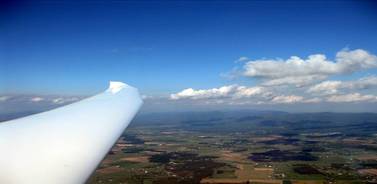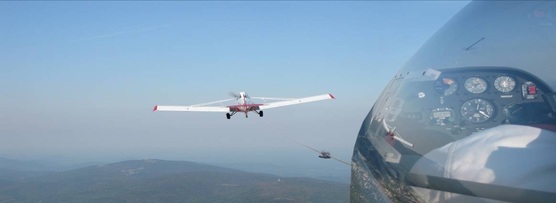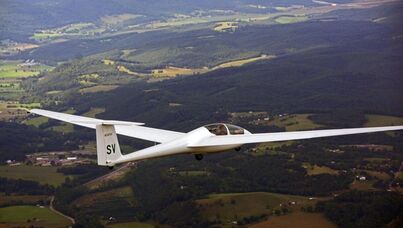Q. WHO IS SHENANDOAH VALLEY SOARING, INC.?

We call ourselves SVS for short and we are a club, not a commercial endeavor. Our purpose is the promotion of flying in its purest form; the art of Soaring. We fly on weekends, year round... weather cooperating.
Q. CAN I TAKE A FLIGHT?
We are a club, not a business. One way to experience soaring is to sign up for an introductory membership with SVS. Included with an introductory membership is a demonstration flight. After that, you may schedule instructional flights with one of our certified flight instructors. The introductory membership lasts for 3 months from the date of your demonstration flight. This also includes a temporary membership with the Soaring Society of America (SSA), and they will send you an issue of Soaring Magazine. This introduction makes a great gift! Click here to contact us.
Q. CAN I TAKE A FLIGHT?
We are a club, not a business. One way to experience soaring is to sign up for an introductory membership with SVS. Included with an introductory membership is a demonstration flight. After that, you may schedule instructional flights with one of our certified flight instructors. The introductory membership lasts for 3 months from the date of your demonstration flight. This also includes a temporary membership with the Soaring Society of America (SSA), and they will send you an issue of Soaring Magazine. This introduction makes a great gift! Click here to contact us.
Q. HOW DOES THE GLIDER GET INTO THE AIR?

There are many methods of becoming airborne in a glider. At Shenandoah Valley Soaring we use a power plane for our tows. A 200 ft. Dacron rope is attached by special hitches between the power plane (tug) and the glider. The plane we use is a Piper Pawnee. It's strong and reliable. When the pilot reaches a predetermined location (that he and the tow plane pilot have agreed upon), he will pull a yellow handle which releases the glider from the tow rope.
Q. HOW LONG DO FLIGHTS LAST?

Flights can last anywhere from 20 minutes to hours! On a clear day visibility is 50 miles or more. No matter what the weather, the picturesque Rockfish Valley, Shenandoah Valley, Wintergreen mountain, the Blue Ridge and Allegheny Mountains, when viewed from 4,000 feet, present a never-ending scenic vista to be enjoyed in the quiet serenity of quiet, motor-less flight.
Q. ARE THERE PHYSICAL LIMITATIONS?
Pilots need to be at least 80 pounds and less than 230 lbs. and shorter than 6 ft. 5 inches.
Q. ARE THERE PHYSICAL LIMITATIONS?
Pilots need to be at least 80 pounds and less than 230 lbs. and shorter than 6 ft. 5 inches.
Q. WHAT ARE GOOD SOARING CONDITIONS? DO YOU NEED A LOT OF WIND?

Wind is not the key ingredient in what you will be doing (Thermal Soaring) -- less is best -- what a glider pilot needs is rising air. If he or she finds rising air, then they do what they can to stay in it. On most days, air rises as a result of the sun heating the ground, and therefore the air at ground level. The heated air rises, until it is in air with the same density. So we need sunny days, with unstable air. Usually the heated air rises high enough for the moisture to condense and form a cloud, the puffy white "cotton ball" cloud (cumulus cloud) of good-weather summer days. Cumulus clouds like the ones shown here promise lots of "lift" and may result in longer glider flights.